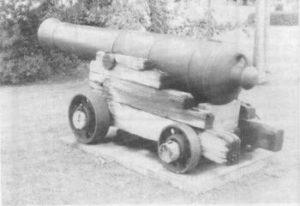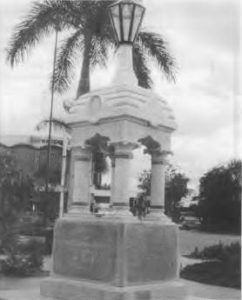- Author
- Pearn, John
- Subjects
- Colonial navies, History - pre-Federation
- Tags
-
- RAN Ships
- None noted.
- Publication
- March 1997 edition of the Naval Historical Review (all rights reserved)
The health of all sea-encircled nations depends in time of conflict, on the health of its seamen. Australia’s “discovery” by European naval commanders and the subsequent colonisation by British fleets depended on the maintenance of health during the voyages of transportation and emigration. By the1870s the British had abandoned the policy of imposed military and naval power in the six Australian colonial states. The Colonial Naval Defence Act of 1865 passed in London, authorised each Australian State to look to its own defence; and the last British regiment, the Royal Irish Regiment (the 18th of Foot) had completed its gold-escort duties and was recalled in 1870. Emergent State navies were established. The Queensland Navy, formally designated from 1884 as The Queensland Defence Force (Marine), was supplemented by Militia and Volunteer seamen to form the Queensland Naval Brigade. Together with its land-based army support, the combined force formed:
“The first homogeneous defence scheme formulated in any part of Australia … Queensland was the first Colony to have a Naval Commandant and a Navy to command”.
Australian naval medicine and health dated from that time.
Early Naval Medicine in Australian Waters

Naval surgeons had sailed and served in the waters of northern Australia since 1623, when an unnamed barber surgeon sailed with Captain Jan Carstens van Emden, in the ‘Pera‘. He was followed by Surgeon Monkhouse, and Surgeon’s Mate Perry in the Bark ‘Endeavour‘ with Cook in 1770. Surgeon Thomas Ledward was with William Bligh in the launch of the ‘Bounty‘ as they negotiated the dangerous waters of Torres Strait on their epic voyage of survival; and Surgeon Robert Brown, one of the best of all doctor-scientists who served in Australia, sailed in Queensland waters in HMS Investigator with Matthew Flinders in 1802 in the great circumnavigation of Australia which was to map the shoreline. The supply ships, such as His Majesty’s Colonial Sloop ‘Amity‘ serving the Moreton Bay Settlement from 1824 – or the later settlements at King George Sound, Fort Dundas (Melville and Bathurst Islands), Port Curtis, Bowen, Cairns and Cooktown – did not carry a surgeon.
After the declaration of Statehood in Queensland in 1859, citizens of the new State established a small military Volunteer Force in 1860. The army volunteers in Brisbane and Ipswich were initially enthusiastic but no plans for any naval defences were envisaged at that time. When the new Governor, Sir George Bowen – himself a sailor, who had served for 16 days in HMS Victory in 1846 – took office, there were no military forces, army or navy, in the northern two-thirds of Australia. Bowen’s arrival and procession up the Brisbane River in the ‘Breadalbane‘ were climaxed by a 21 gun salute, but one fired by a Reception Committee from a cannon purchased “…to fire salutes, its cost defrayed by publications (sic) subscription”.
In northern Australia, naval medicine had its origins in two disciplines within the border sphere of medicine – quarantine and immigration. A quarantine station was established at Dunwich, on Stradbroke Island from 1849 and was gazetted in the New South Wales Government Gazette of 16 July, 1850. Dr. Patrick Walsh Mallon was appointed as the first Quarantine Surgeon. The second doctor to act as quarantine medical officer (albeit not officially appointed) was Dr. David Ballow who died at Moreton Bay from typhus (ship fever) contracted during his care of stricken immigrants from the S.S. ‘Emigrant‘ in September, 1850.

Formerly an open-air goal (from September, 1824), the Moreton Bay Settlement was thrown open for free entry in 1843. Immigration commenced slowly but by 1859 the population of Brisbane had grown to 23,500. Dr. William Hobbs was appointed as “Health Officer, Moreton Bay – Medical Attendant on Immigrants”. This association with ship-arrivals encompassed the core themes of naval medicine. Quarantine and Immigration were to remain the essence of naval medicine in the Australian colonies, at peace, for the remainder of the nineteenth century. After the ‘Emigrant‘ disaster (1850) the next ship-board epidemic to hit northern Australia was the tragedy of the ‘L’Allier‘, a French warship which lost three sailors and 76 other passengers and crew prior to and during its quarantine incarceration at Cooktown in February 1879. The disease which struck that ship has never been diagnosed with certainty, but was referred to as “bilious fever”, or “typhoidic”. It was probably a combination of malaria, typhus and dysentery.




